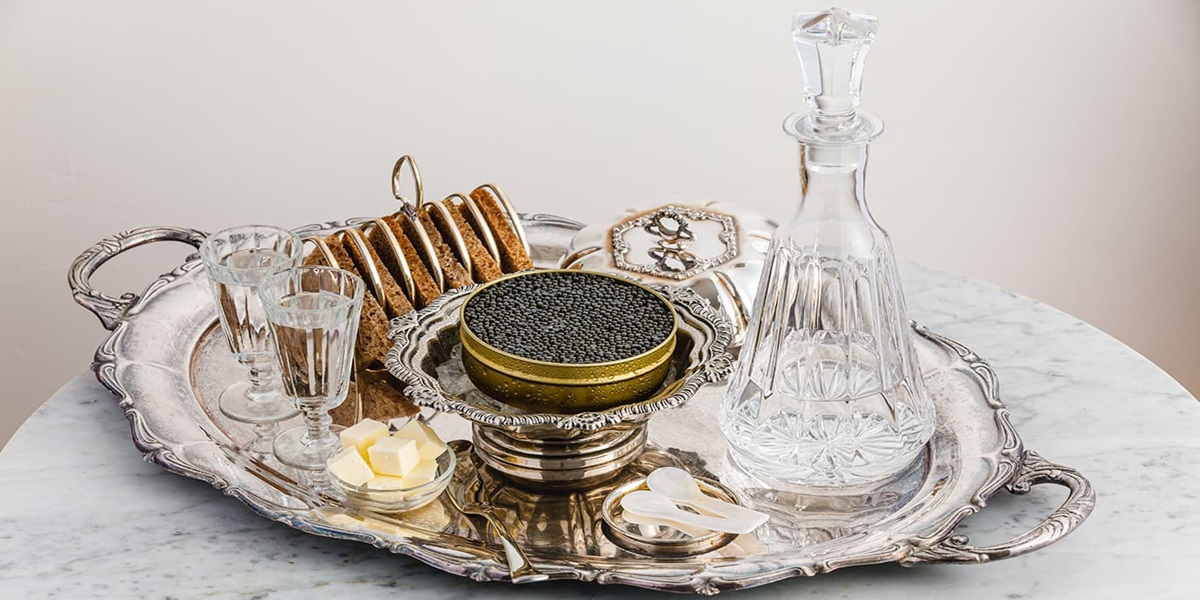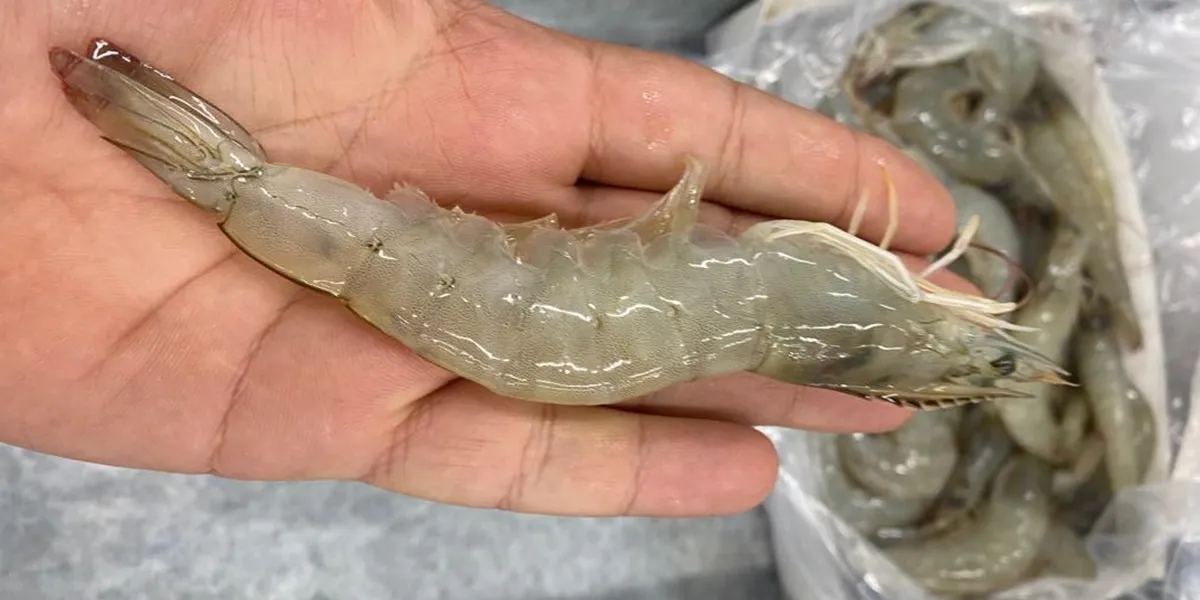When most people hear the word caviar, they imagine luxury, elegance, and a taste reserved for the elite. But there’s a unique form of this delicacy that’s not only refined but also more versatile and shelf-stable: pasteurized caviar. Unlike traditional caviar, which is highly perishable, pasteurized caviar goes through a gentle heat process that preserves its rich flavor and delicate texture while making it safer and longer-lasting.
This article is your practical guide to understanding the types of pasteurized caviar, its nutritional benefits, culinary uses, and safety insights—especially for health-conscious consumers and gourmet enthusiasts. Whether you’re new to caviar or already a connoisseur, what you’ll learn here will help you make more informed, confident choices about this exquisite food.
Ready to elevate your knowledge of pasteurized caviar? Read on and explore what truly makes it a modern gourmet essential.
What Is Pasteurized Caviar? | Understanding the Process and Purpose
Pasteurized Caviar is a type of fish roe that has undergone a gentle heat-treatment process to increase its shelf life while maintaining much of its natural taste and texture. This process typically involves heating the caviar to 60–65°C for a short period, then sealing it in vacuum-packed glass jars. The primary goal is to destroy harmful bacteria and enzymes that could cause spoilage, making the product more stable for long-term storage.
Unlike fresh or non-pasteurized caviar—which must be kept cold and consumed quickly—pasteurized caviar can remain unopened and safe to eat for several months, even without refrigeration in some cases. Once opened, it should still be kept cold and consumed within a few days for best quality.
Importantly, pasteurization is not the same as full sterilization. It’s a carefully controlled method designed to preserve flavor, texture, and nutritional value while extending usability. The method is widely accepted in food safety practices around the world, including by the FDA and European Food Safety Authority.
Pasteurized caviar is often slightly firmer in texture compared to its fresh counterpart, but this subtle difference is outweighed by the added convenience and safety. For chefs, caterers, or consumers who need longer shelf life without sacrificing gourmet quality, pasteurized caviar is an excellent choice.
Types of Pasteurized Caviar | Exploring Varieties and Taste Profiles
There are several types of pasteurized caviar, each offering unique flavor notes, colors, and textures based on the fish species and their origin. The most well-known varieties include Beluga, Ossetra, Sevruga, and Kaluga, each pasteurized in a way that retains their iconic characteristics.
Beluga pasteurized caviar is prized for its large, soft eggs and delicate, buttery flavor. Although slightly firmer due to pasteurization, the luxurious taste remains mostly intact. Ossetra pasteurized caviar, on the other hand, is known for its nutty undertones and medium-sized grains—making it a popular choice for chefs seeking both flavor and structure in their dishes.
Sevruga pasteurized caviar offers a more intense, briny profile with smaller, darker eggs, ideal for those who enjoy a stronger taste. Kaluga pasteurized caviar, which mimics the Beluga in size and flavor, has become a sustainable favorite in modern caviar markets.
These types are typically pasteurized using low-heat, short-duration methods, designed to preserve the roe’s essential proteins and fatty acids. The type of fish, harvest method, and salting technique (like Malossol, meaning “little salt”) also influence the final product.
Understanding these differences allows consumers to choose the right caviar for their palate, cooking needs, and presentation goals. Pasteurized caviar makes premium taste more accessible, while offering options for safe, long-term use.
Health Benefits of Pasteurized Caviar | Nutrition Backed by Science
The Health Benefits of Caviar: More Than Just a Luxury Food
Pasteurized caviar is not just a gourmet indulgence—it’s a nutritional powerhouse. One tablespoon of pasteurized caviar can deliver a significant dose of omega-3 fatty acids, which are essential for heart health, brain function, and reducing inflammation. These polyunsaturated fats are remarkably stable in pasteurized roe when processed correctly under controlled temperatures.
In addition to omega-3s, pasteurized caviar is rich in vitamin B12, critical for red blood cell production and nervous system function. It also contains high levels of selenium, an antioxidant that supports immunity and thyroid health, and iron, which helps maintain healthy energy levels.
Despite the pasteurization process, many of these nutrients remain intact thanks to the low heat and short exposure times used during processing. Food science studies show that mild heat treatments like pasteurization have minimal impact on most micronutrients in caviar.
The high protein content in pasteurized caviar (around 25–30 grams per 100g) supports muscle health and recovery, making it a surprisingly beneficial addition to a balanced diet.
For those concerned with food safety—such as pregnant women or immunocompromised individuals—pasteurized caviar also reduces the risk of foodborne pathogens like Listeria, without compromising its nutritional profile.
In short, pasteurized caviar provides a blend of luxury and health—offering both gourmet pleasure and functional benefits.
How Pasteurization Affects Taste and Texture | Culinary Insights
One of the biggest questions among caviar lovers is whether pasteurization changes the sensory experience of the roe. The answer: yes, but not as much as you might think—especially when pasteurization is performed correctly.
During the process, caviar is gently heated and sealed to preserve it for longer use. This step slightly alters the texture, making the eggs a bit firmer than fresh or non-pasteurized versions. However, the outer membrane stays intact, and the characteristic pop still remains in high-quality products.
Taste changes are minimal if the process is done with expertise. Most pasteurized caviars retain their delicate flavors—whether buttery (as in Beluga), nutty (like Ossetra), or briny (like Sevruga). A slight mellowing of intensity may occur, but for most consumers, it’s not noticeable unless compared side-by-side with fresh roe.
Top producers use advanced thermal processing techniques that keep flavor oils and proteins stable, minimizing oxidation and preserving aroma. Blind taste tests conducted by chefs and food scientists often show that even seasoned caviar lovers cannot easily detect the difference.
This means you can enjoy the luxurious taste of caviar with the added benefit of safety and longevity—ideal for fine dining establishments, event catering, or personal gourmet use at home.
Read more: How to Identify High-Quality Caviar?
Safe for More People | Why Pasteurized Caviar Is a Better Option for Some
Why Is Iranian Caviar the Best in the World? One of the key benefits of pasteurized caviar is its enhanced food safety profile. Because it’s heat-treated, the risk of bacterial contamination—particularly Listeria monocytogenes and Salmonella—is significantly reduced compared to raw, non-pasteurized caviar.
This makes pasteurized caviar a safer option for individuals with vulnerable immune systems, such as pregnant women, older adults, and people undergoing medical treatments. According to the Centers for Disease Control and Prevention (CDC) and World Health Organization (WHO), heat-treated seafood products are preferred for these groups.
Additionally, pasteurized caviar does not require immediate refrigeration during transport, making it safer for travel and international shipping. This increases its appeal for global consumers, retailers, and food service professionals.
Despite these safety advantages, pasteurized caviar still retains much of its original nutritional and culinary value. It’s not a compromise—it’s a practical alternative for broader use. For those who love the taste of caviar but have dietary safety concerns, pasteurized versions offer peace of mind without sacrificing experience.
Is Pasteurized Caviar Safe During Pregnancy? | A Scientific Perspective
Pregnancy is a time when food safety becomes a top priority. One of the key benefits of pasteurized caviar is that it’s considered safe for most pregnant individuals. Unlike raw or unpasteurized caviar, which may carry harmful bacteria such as Listeria monocytogenes, pasteurized caviar undergoes a heat treatment that significantly reduces microbial risk.
According to the CDC and FDA, heat-treated fish roe products, including pasteurized caviar, are much less likely to cause foodborne illness. The pasteurization process heats the caviar to around 60–65°C for a short time, effectively eliminating pathogens while maintaining nutritional integrity and flavor.
From a nutritional standpoint, pasteurized caviar remains rich in omega-3 fatty acids, especially DHA, which plays a vital role in fetal brain and eye development. It also provides vitamin B12, essential for DNA synthesis and red blood cell production, and iron, which helps prevent anemia during pregnancy.
Despite its safety, portion control is still important due to caviar’s natural sodium content. Moderation is key—enjoy it as a luxurious addition to a balanced diet rather than a staple.
Ultimately, pasteurized caviar offers a rare blend of gourmet experience and safety, making it a thoughtful option for expectant mothers who want to enjoy fine foods without unnecessary risk.
Top Culinary Uses for Pasteurized Caviar | From Fine Dining to Everyday Elegance
Pasteurized caviar is not just for Michelin-star restaurants. Its extended shelf life and versatility make it perfect for home cooks, catering professionals, and anyone exploring elevated cuisine. Unlike raw caviar, pasteurized varieties are ideal for a broader range of dishes thanks to their stability and ease of handling.
For classic presentations, pasteurized caviar is often served on blinis with crème fraîche, chives, or hard-boiled egg. Its briny richness pairs beautifully with neutral bases like potatoes, buttered toast, or sourdough crisps. In fine dining, chefs use it to top oysters, deviled eggs, and even seafood tartare.
Modern uses include incorporating caviar into fusion dishes, like sushi rolls or pasta sauces, where the firm texture holds well against heat and moisture. You can also use it as a garnish for soups or salads, adding a salty burst of umami.
What makes pasteurized caviar especially valuable is its resilience—it can be stored longer and transported more easily, making it a go-to option for special events and international cuisines.
If you’re looking to elevate your next meal with sophistication, pasteurized caviar delivers both elegance and convenience.
Nutritional Profile of Pasteurized Caviar | Is It Still a Superfood?
Pasteurized caviar remains a powerful superfood, despite undergoing a mild heating process. It’s packed with essential nutrients that support heart health, brain function, immunity, and overall vitality. Scientific studies show that the controlled heat of pasteurization does not significantly degrade key bioactive compounds in caviar.
A single tablespoon of pasteurized caviar contains:
• Omega-3 fatty acids (EPA and DHA) – critical for cardiovascular and neurological health
• High-quality protein – around 7 grams per serving, supporting muscle repair
• Vitamin B12 – 200% of the recommended daily intake
• Selenium – a potent antioxidant that aids immune defense
• Iron and Magnesium – important for red blood cell production and energy metabolism
Pasteurized caviar is also relatively low in carbohydrates and contains healthy fats, making it compatible with many dietary patterns, including ketogenic and low-carb diets.
Because pasteurization is done at low temperatures and for short durations, most nutrients remain bioavailable. This allows consumers to benefit from both the gourmet experience and the nutritional density of the roe.
So, whether you’re consuming it for taste or health—or both—pasteurized caviar lives up to its reputation as a true nutrient-dense delicacy.

How to Choose High-Quality Pasteurized Caviar | A Smart Buyer’s Guide
Selecting the right pasteurized caviar involves more than just picking the most expensive jar. Several factors determine the quality, taste, and authenticity of the product. Here’s what to look for:
1. Species and Origin: Look for clearly labeled fish species like Beluga, Ossetra, Sevruga, or Kaluga. Origin matters—reputable farms or sources (e.g., Iran, Russia, or sustainable U.S. farms) usually indicate higher quality.
2. Grade: “Malossol” means lightly salted and is preferred for flavor preservation. Grade 1 usually denotes larger, more intact eggs with better texture.
3. Packaging: Quality pasteurized caviar comes in vacuum-sealed glass jars. Avoid containers with air pockets, signs of leakage, or inconsistent labeling.
4. Texture and Appearance: The eggs should be glossy, intact, and uniform. Cloudiness or broken eggs may signal poor processing.
5. Certifications: Trustworthy brands often carry food safety and sustainability certifications such as CITES, MSC, or HACCP compliance.
6. Storage Info: Look for clear “best by” dates and storage recommendations. Pasteurized caviar can last several months unopened when stored correctly.
By understanding these criteria, you’ll avoid low-grade imitations and enjoy an authentic pasteurized caviar experience worth savoring.
Who Should Choose Pasteurized Caviar? | Ideal Use Cases and Audiences
Pasteurized caviar offers an ideal solution for a wide range of consumers. Its longer shelf life, safety profile, and preserved flavor make it more accessible and practical than raw caviar in many situations.
Travelers and gift-givers appreciate its durability—pasteurized caviar can travel long distances without spoiling. Restaurants and caterers benefit from its stability, allowing them to stock larger quantities without worrying about rapid expiration.
Home cooks and culinary enthusiasts love the flexibility it offers—being able to store it longer and incorporate it into dishes without rushing. And most importantly, pregnant women, older adults, and people with weakened immune systems can enjoy it with reduced risk of foodborne illness.
Pasteurized caviar expands access to this luxury product while maintaining its elegance and culinary value. Whether you’re a chef, a host, or a foodie, this version of caviar fits into more lifestyles and diets—without compromising on excellence.
Sustainability and Pasteurized Caviar | How It Supports Responsible Consumption
As sustainability becomes a growing concern in the food industry, pasteurized caviar is emerging as a more eco-conscious choice. Unlike wild-harvested caviar, which often threatens endangered sturgeon populations, most pasteurized caviar today is sourced from sustainably managed aquaculture farms that prioritize conservation and ethical practices.
These farms follow strict international guidelines—such as those from CITES (Convention on International Trade in Endangered Species) and MSC (Marine Stewardship Council)—to ensure that caviar is harvested without harming the environment or overfishing native species.
Pasteurization also plays a role in reducing food waste. Because pasteurized caviar has a longer shelf life, producers and consumers alike are less likely to discard unused or expired product. This contributes to better resource management and efficiency throughout the supply chain.
Moreover, pasteurized caviar is often distributed in recyclable glass jars with vacuum-sealed lids, which reduces plastic packaging and aligns with environmentally conscious food trends.
For consumers who care not only about flavor but also about the environmental impact of their food choices, pasteurized caviar offers an elegant solution. It supports sustainable sturgeon farming, helps protect biodiversity, and minimizes waste—all while delivering the luxurious taste of traditional caviar.
In a world where conscious eating matters more than ever, choosing pasteurized caviar is a meaningful way to enjoy fine food responsibly.
Pasteurized Caviar FAQs | Expert Answers to Common Questions
When it comes to pasteurized caviar, curious food lovers often have plenty of questions. Here are expert answers to some of the most frequently asked queries:
Can you freeze pasteurized caviar?
It’s not recommended. Freezing can damage the egg membranes and ruin the texture. Pasteurized caviar already has an extended shelf life—just store it at 0–4°C and consume within a few days once opened.
Does pasteurized caviar taste “cooked”?
Not if it’s done properly. The mild heat used in pasteurization (around 60–65°C) is just enough to make it shelf-stable, but not enough to impart a “cooked” flavor. Most people can’t tell the difference in taste compared to fresh caviar.
Is it less luxurious than fresh caviar?
It depends on your preference and purpose. While fresh caviar is prized for its ultra-soft texture, pasteurized caviar offers convenience, safety, and longevity without a major drop in quality—especially from premium producers.
How long does pasteurized caviar last?
Unopened, it can last 6–12 months in the refrigerator. Once opened, it’s best consumed within 2–3 days for optimal freshness.
Is pasteurized caviar suitable for children or seniors?
Yes, especially because it’s safer due to reduced bacterial risk. Just keep portions moderate due to its natural salt content.
Pasteurized Caviar: A Modern Twist on a Classic Luxury
Pasteurized caviar offers a perfect balance between traditional luxury and modern practicality. Through a gentle heat-treatment process, this form of caviar retains much of its original flavor and texture while gaining added shelf stability and food safety. It opens the door to broader use, appealing not just to elite dining experiences but also to everyday culinary creativity at home. With its wide variety of types—ranging from Beluga to Ossetra—pasteurized caviar brings depth, richness, and refined flavor to any dish. More importantly, it retains its impressive nutritional profile, packed with omega-3 fatty acids, vitamin B12, selenium, and other essential nutrients.
Pasteurized caviar is ideal for individuals looking for gourmet taste with enhanced safety and longer shelf life. Whether you’re preparing for a formal dinner party, a romantic evening, or just exploring new food experiences, this delicacy delivers unmatched quality and versatility.
Understanding the different types, characteristics, and benefits of pasteurized caviar is key to enjoying it fully. Now that you’ve explored its essential features, you’re better equipped to appreciate this refined delicacy—responsibly and creatively.




